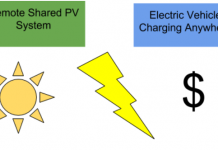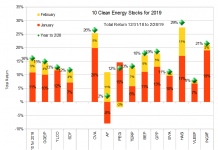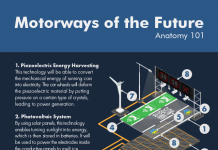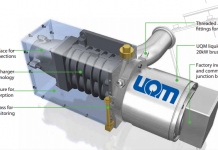Since early 2008, Axion Power International (AXPW.OB) has been quietly developing an experience base and building grass roots support for a gas-guzzler to dual-mode EV conversion initiative that has the short-term potential to transform up to 120 million gas-guzzling pickup trucks, sport utility vehicles and vans into gas sipping EV-50s. If recent articles from sources as diverse as The Daily Green, Edmunds Green Car Advisor and the Environmental Defense Fund are reliable indicators, the initiative is rapidly gaining ground.
The concept is simple – add electric power trains and battery packs to America’s least fuel-efficient vehicles and give them 50 miles of plug-in EV range coupled with unlimited internal combustion range. The potential benefits to the economy are enormous because the U.S. could slash gasoline consumption by a billion gallons per year for every 1% of the gas-guzzler fleet that’s converted to dual-mode. It’s also a solution that could be immediately implemented using domestic products and create untold thousands of new cleantech jobs.

The first public discussion of Axion’s gas-guzzler conversion initiative was in Dr. Edward Buiel’s testimony before the Senate Committee on Energy and Natural Resources last July. A few months later, Andrew Grove, the former chairman of Intel, published an article in McKinsey Quarterly titled “An Electric Plan for Energy Resilience” that approached the topic from a slightly different perspective. While Dr. Buiel’s testimony focused on using lead-acid batteries and Mr. Grove’s article focused on using Li-ion batteries, both men reached the same conclusion: that gas-guzzler to dual-mode EV conversions are the most cost effective baby-steps America can take in its drive for energy independence.
The following table summarizes the estimated cost to convert a Chevy S-10 pickup into a dual-mode EV-50 using off-the-shelf drive train kits and lead-acid and Li-ion batteries from domestic suppliers. For both system types, the table assumes a 10-year useful life and a 15 kWh battery pack for a 50-mile electric range. For the lead-acid system, the table assumes a battery life of 40 months, the equivalent of 800 charge-discharge cycles, and two battery replacements. For the Li-ion system, the table assumes battery replacements will not be needed. Since space and weight are not critical constraints in a pickup, SUV or van, I have not made any adjustments for the 300 to 400 pound weight advantage of a Li-ion system. I’ve also avoided maintenance estimates because they’re beyond my capabilities.
| Essential Conversion Components Gas-guzzler to Dual-Mode EV 50 |
Lead-acid System |
Li-ion System |
| 15 kWh battery pack | $3,000 | $15,000 |
| LAB replacement after 40 months | $3,000 | |
| LAB replacement after 80 months | $3,000 | |
| Off-the-shelf electric drive conversion kit | 4,500 | 4,500 |
| Miscellaneous conversion materials | 900 | 900 |
| Conversion labor | 3,000 | 3,000 |
| Total up-front cost before subsidies | $11,400 | $23,400 |
| Total 10-year cost before subsidies | $17,400 | $23,400 |
The following table drills down another level and calculates how the capital costs would likely work in the case of a typical pickup, SUV or van owner. I’ve depreciated the electric drive system over a 10-year period and depreciated the batteries over their respective useful lives. I’ve then added an imputed interest factor of 6% per year on the total up-front cost before subsidies. Finally, I’ve factored in charging costs at an average price of $0.10 per kWh and calculated a fully loaded breakeven gas price before subsidies assuming a baseline fuel efficiency of 17.5 mpg for the unmodified vehicle.
| Estimated Monthly Cost of Ownership |
Lead-acid System |
Li-ion System |
| Depreciation of electric drive costs | $70 | $ 70 |
| Depreciation of battery costs | 75 | 125 |
| Imputed interest on up-front cost (6% per annum) | 57 | 117 |
| Electricity for daily recharge (20 days @ 15 kWh @ $.10) | 30 | 30 |
| Total monthly cost | $232 | $342 |
| Monthly gas savings (20 days @ 50 miles @ 17.5 mpg) | 52.7 | 52.7 |
| Fully loaded breakeven gas price | $4.40 | $6.50 |
It is very important to understand that I have not included any tax incentives or other subsidies in either of these cost tables because of the variety and complexity of existing and proposed Federal and State programs. If new subsidy regimes are implemented to encourage gas-guzzler to dual-mode conversions, the breakeven costs to users are likely to plummet.
While my fully loaded breakeven gas price numbers don’t look all that good in comparison to current prices of $2.25 per gallon, I am convinced that current prices are not sustainable. The following graph from the Energy Information Administration tracks the spot price of West Texas Crude from January 1986 through April 2009.

What I find most intriguing is that the long-term trend was basically flat from ’86 until it reached an inflection point in the late ’90s, at a time that roughly coincides with recovery from the ‘97 Asian financial crisis. Since then, oil prices have followed a consistent upward trend. I don’t want to join the peak oil debate, but I think the long-term price chart presents compelling evidence that the world passed a “peak cheap oil” inflection point about 10 years ago. If my analysis is correct, oil prices will revert to their new trend line over the next 12 to 18 months and then resume their relentless upward march until the next inflection point is reached. By the time the global economy emerges from the current recession, I believe $80 to $100 oil is a virtual certainty, as are $3.50 to $4.00 gas prices.
Some of most common comments on my EV articles relate to vehicle range limitations. While most Americans drive less than 50 miles per day, the ability to get in the car and drive without constraint seems to be deeply ingrained in our collective psyche. Therefore, I believe most pickup, SUV and van owners will truly appreciate the flexibility of a dual-mode system that will let them switch back and forth between the internal combustion and electric drive systems depending on the needs of a particular trip.
I’m convinced that a rapid implementation of Axion’s gas-guzzler to dual-mode EV conversion initiative could be just what the industry needs. While I believe most consumers will choose the least expensive solution, there will still be large numbers of users who are willing to pay a premium price for the perceived advantages of Li-ion. Since gas-guzzler to dual-mode EV conversions use off-the-shelf technology and nobody can claim a solid intellectual property advantage, every manufacturer would have a level playing field in a multi-billion dollar market where technologies would succeed or fail on their own merits. More importantly, small battery producers would not be forced into the unenviable position of a midget negotiating with a giant.
America’s strength has always been the ingenuity and flexibility of its entrepreneurs. In a world where we need to get up in the morning, go to work and solve our problems to the best of our ability, I believe the Axion initiative is a tremendous first step that holds immense short-term promise for the energy storage sector, energy independence, jobs and the domestic economy.
Disclosure: Author is a former director and executive officer of Axion Power International (AXWP.OB) and holds a large long position in its stock. He also holds small long positions in Exide Technologies (XIDE) and Enersys (ENS).
John L. Petersen, Esq. is a U.S. lawyer based in Switzerland who works as a partner in the law firm of Fefer Petersen & Cie and represents North American, European and Asian clients, principally in the energy and alternative energy sectors. His international practice is limited to corporate securities and small company finance, where he focuses on guiding small growth-oriented companies through the corporate finance process, beginning with seed stage private placements, continuing through growth stage private financing and concluding with a reverse merger or public offering. Mr. Petersen is a 1979 graduate of the Notre Dame Law School and a 1976 graduate of Arizona State University. He was admitted to the Texas Bar Association in 1980 and licensed to practice as a CPA in 1981. From January 2004 through January 2008, he was securities counsel for and a director of Axion Power International, Inc. a small public company involved in advanced lead-carbon battery research and development.









John,
Very interesting article.. Ypu have methinking about converting 2005 Jeep Liberty diesel to a hybrid… much cheaper than buying the Aptera I lust after. Would this conversion work with a 4WD drivetrain?
A good idea.
I have been following you on SA, however this blog is something special in the alt energy space and Tom Konrad is no small reason for that. The lithium supply is running head first into Evo Morales politics in Bolivia. I do not know if you are aware, however all profits from commodity exports must be reinvested domestically, according to Morales edict. Since Bolivia is the largest stockpile of lithium brine in the world, that might have to be worked into lithium discussion. I believe that ARgentina also has lithium in quantity, where the Kirschners are their own obstacle. Anyhow, I enjoy your articles and watch Axion closely. Regards.
Tom, from a quick look at the following website it seems that gas guzzler to EV-50 conversions are possible on 4WDs.
http://www.driveev.com/jeepev/
The primary goal of Axion’s initiative is not to do the physical conversions but to develop education programs, train mechanics to do the work and get to uniform standards and certifications.
Calvino, thanks for the kind words
John, I don’t understand why the Axion system would need to have the batteries changed twice, since I understand it is a capacitor/lead acid combo.
The presumably similar AFS system has been tested to be good for 100,000 miles.
No doubt the battery capacity would have to be rather over-specified to control deep-drain, but the economics would surely be better.
http://alfin2100.blogspot.com/2008/01/ultracapacitor-battery-hybrid-electric.html
David, as much as I love Axion and their lead-carbon PbC technology, I don’t want to be accused of flogging a particular technology to the exclusion of others. So in a break from past practice, I didn’t include a lead-carbon hybrid in today’s table. Instead, I used simple valve regulated lead-acid at the low end and advanced li-ion at the high end.
Had I included a lead-carbon column, the initial battery pack cost would be closer to $6,000 but no replacements would be needed. After reading your comment I went back to my excel spreadsheet and ran the lead-carbon numbers. The exercise resulted in up-front and life-cycle cost of $14,400 and a breakeven gas price of $4.13.
The beauty of this particular initiative is that it does not give Axion or anybody else a particular market advantage and every producer will have an equal chance to prove his own value in a free and open market.
John, thanks for the informative reply. I can also see a big market for retro-fit, as it looks as though we are in for a wildly swinging oil price.
I wonder what the effect of including regenerative braking into the costs of the system would be? Presumably your initial figures at least did not include an estimate for this, as it would be difficult to re-charge the lead-acid quickly enough. Somewhat offsetting the initial costs of the recharge equipment, presumably it would be possible to reduce the battery capacity.
In my own little VW Polo, which is smaller than a Rabbit, I have it vaguely in mind that I could probably get away with half the power you suggest, and I don’t really need the back seats anyway.
Thanks for all your good work.
Regards,
David, recuperative braking is a tremendous technical challenge in the hybrid market because most batteries can’t stand up to the immense power surges. Right now the only thing that works for sure with those power levels is a supercapacitor. I have hope that the PbC may prove to have enough supercapacitor characteristice for the task. But that will take a lot of study before anybody can say one way or the other.
Hey John,
How do you think Axion’s lead-carbon battery will stack up against Firefly’s oasis battery? Two different ways to improve the old lead-acid batteries but it sounds like they have results/performance. Can you do a comparison?
thx
Kent
kent, the Axion and Firefly batteries are very different devices. Firefly uses a composite carbon foam to reduce current collector weight and improve chemical efficiency; but it it’s my understanding that the carbon is not part of the basic electrochemistry. Axion on the other hand is building a hybrid that’s half lead acid and half supercapacitor. So the two technologies are focusing on features. Conceptually, I think it would be fair to say Firefly is primarily focusing on energy while Axion is primarily focusing on power. It will be a lot easier to make detailed comparisons when the devices have been out for a while and the manufacturers publish detailed performance specifications.
stock symbol “RZ” has the same technology and will be showing it this week at a auto technology conference somewhere in the US.
Ron, Razer Technologies (RZ) and its integration partner FEV, Inc. will unveil a Hummer H3 retrofit at the SAE World Congress. Their primary focus is drivetrain systems rather than storage systems and it’s not entirely clear whether they are focused on the retrofit or new vehicle market. But a 100 mpg Hummer is a great example of how the Axion initiative can work in real life. It’s a world of opportunity for a wide variety of companies with creative solutions.
The time is right now John, now that the oil prices are hiking all over the world. We need to find solutions on this and your article does. Thanks again for this great post.